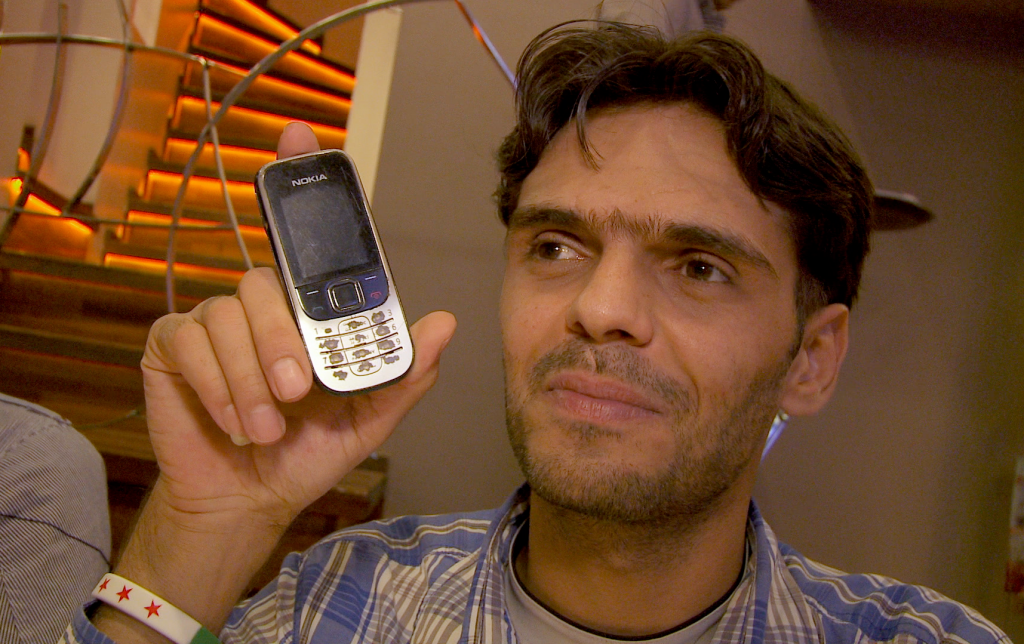YouTube and the Syrian Revolution

Since the outbreak of the Syrian Revolution it’s been near impossible to gather firsthand news and images of what’s happening on the ground. As the situation deteriorated and the conflict escalated, reporting from inside Syria became not just dangerous, but suicidal.
According to the Committee to Protect Journalists, 77 professional journalists have been killed inside Syria since 2011 making Syria the most dangerous war zone in the world.
But in the vacuum of professional news coverage came forth a network of hundreds of citizen journalists armed with cellphones. With a click, brave activists captured gritty, unfiltered images of life inside war-torn Syria on their mobile phones and uploaded more than 300,000 videos to YouTube for an audience of millions worldwide.
While they may not be wielding assault rifles and RPGs on the front lines, many citizen journalists live under the constant threat of the Assad regime’s attempts to unveil their online identities that, if revealed, would mean arrest, torture or even death for them and their families.
To honor those who are selflessly risking their lives to document the Syrian uprising, the first ever Syria Mobile Phone Film Festival was created. The festival, which includes 13 original short films, features a wide variety of genres (documentary, experimental, narrative) all focusing on life for Syrians living in the shadow of a violent, armed conflict.
As difficult as some of these short films may be to watch, each provides a valuable lesson not only about the brutality of the war in Syria, but also about the inspiring resilience of the Syrian people.
Check out some of our favorites here.
Red Lines, which was awarded Best Documentary Feature at the 2014 Woodstock Film Festival, provided cinematic boots on the ground by editing our own original footage with footage contributed by citizen journalists. Working with their raw footage was challenging on many levels. Of course, it was emotionally grueling. When editing a film, scenes need to be watched over and over, no matter how traumatic the content may be. Watching clips of cities being leveled by rocket fire, protestors being shot, or children dying in the wake of a chemical weapons attack never gets easy.
From a production standpoint our challenge was to track down the owners of over 40 YouTube videos and ask their permission to use their footage in our documentary. Many of these videos went viral and were reposted dozens of times by different users. While this is great for activism, it makes finding the right source to ask for permission a quixotic pursuit.
After countless hours of scanning YouTube for the original posts, we managed to find a way to get in touch with the rightful owner of each clip.
Some were easy to find through Facebook or by e-mail – mainly groups like the Local Council of Mleha City and the Local Council of Daraya City.
Individual citizen journalists were more difficult to get a hold of.
With many operating under pseudonyms like Syrian2011X or mmmooo bbbggg with no other means of contact, we sent direct messages on YouTube. Often we didn’t hear back, leaving us to hope that these anonymous heroes were still alive. Occasionally, they would respond, and the answers were always along the lines of “Of course” or “Thank you for helping spread our message.”
While the Vietnam War is known as the first “televised war,” the Syrian Revolution could be called the first “YouTube war.” Just as television coverage of the Vietnam War put armed conflict under unprecedented scrutiny so too have the YouTube reports coming out of Syria. But what has this coverage amounted to? Despite a seemingly endless reel of documentary evidence depicting the atrocities of the Assad regime available to anyone with an Internet connection, the persistent lack of public outrage is profoundly disturbing.
And yet, despite a world that seems indifferent to their plight, citizen journalists continue to bear witness, documenting the day-to-day horrors of the conflict inside Syria in hopes of capturing someone’s attention. And for that, we thank them.
To credit those YouTube journalists and activists whose content helped weave together Red Lines, here are links to their individual pages:
Abdulrazaq Al’Halaq
Al’Share
Bassel Homs
Flash News Network
Hamdosh Al’Dasher
Hamouda Syria
Jaguar001982
Jokerfreedom1
Local Council of Daraya City
Local Council of Mleha City
KafrBatna City Coordinating
Media Office of Binnish
mmmooo bbbggg
Political 122
Salah Eldeen Revolutionaries Council
Saqba City Coordinating
Souriana4all
Syrian Abroad
Syrian2011X
United Media Office in Arbin City
Comments